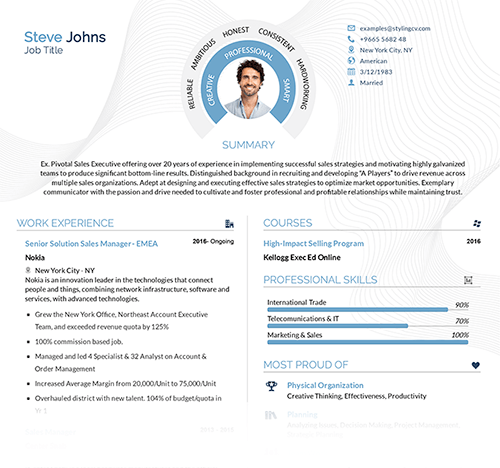
How to Describe Freelance/Contract Work on a Resume: A Step-by-Step Guide Why Freelance Work Deserves a Spotlight on Your Resume Describing freelance or contract work on a resume can feel tricky. You…
Resume Help - “How do I describe freelance/contract work on a resume?”
Get your free resume now“How do I describe freelance/contract work on a resume?”
How to Describe Freelance/Contract Work on a Resume: A Step-by-Step Guide Why Freelance Work Deserves a Spotlight on Your Resume Describing freelance or contract work on a resume can feel tricky. You want hiring managers to see your skills, but you’re not sure how to structure gigs, short-term projects, or self-employment. The good news? Freelancing…
Sarah Reynolds
Content Specialist

How to Describe Freelance/Contract Work on a Resume: A Step-by-Step Guide
Why Freelance Work Deserves a Spotlight on Your Resume
Describing freelance or contract work on a resume can feel tricky. You want hiring managers to see your skills, but you’re not sure how to structure gigs, short-term projects, or self-employment. The good news? Freelancing showcases adaptability, initiative, and niche expertise—traits employers love. Done right, your freelance roles can outshine traditional job titles.
Whether you’re a full-time freelancer or mixed contract work with full-time roles, clarity is key. Avoid vague labels like “Self-Employed.” Instead, frame projects as professional experiences with measurable outcomes. This guide breaks down how to highlight freelance/contract work strategically, so your resume stands out in competitive job markets.
4 Features Every Freelance Resume Section Needs
1. Job Title Precision: Use titles like “Freelance Graphic Designer” or “Contract Software Developer” to instantly communicate your role.
2. Client or Project Names: Include notable clients (e.g., “Developed CMS for XYZ Corp”) to build credibility.
3. Metrics-Driven Bullet Points: Quantify results, like “Increased client website traffic by 150% in 3 months.”
4. Consistent Timeframes: Group short-term gigs under a “Freelance Projects” header with dates to avoid resume gaps.
Best Resume Templates to Showcase Freelance Work
Modern Pro Resume Template: Clean, hybrid layout lets you list clients under a “Freelance Experience” section without clutter.
Chrono CV Template: Places contract roles alongside full-time jobs chronologically, ideal for blended work histories.
Simple CV Template: Minimalist design for listing multiple projects with bold headers and bullet points.
Tailoring Your Freelance Resume for Impact
- Merge Similar Projects: Group 5+ logo design gigs under “Freelance Brand Designer – 2020-2023.”
- Use Action Verbs: Start bullets with “Designed,” “Launched,” or “Optimized” to emphasize contributions.
- Specify Industries: Mention niches like “Served healthcare startups” to align with target jobs.
Freelance Resume FAQs: Answered
Should I Name Every Client on My Resume?
Only include clients if they’re recognizable or relevant. For smaller projects, say “10+ startups in fintech space” to protect confidentiality while showing scope.
How Do I Explain Employment Gaps from Freelancing?
Frame gaps as active freelancing periods. Use a header like “Independent Consultant” with dates and key achievements to fill the timeline.
Can I List Freelance Work Under One Job Title?
Yes! Create a “Freelance Web Developer” section and list projects or clients below. Add outcomes like “Delivered 20+ mobile apps with 4.8 avg. client ratings.”
Do I Need a Portfolio Link?
Absolutely. Add a short “Portfolio: [link]” under your contact info. Hiring managers often check these to verify freelance quality.
What If My Contract Work Was Remote?
Highlight it! Remote work skills like self-management matter. Add a bullet like “Collaborated with remote teams across 5 time zones.”
Your Freelance Experience Deserves the Right Format
A well-structured resume turns freelance work from a question mark into a selling point. Using templates designed for flexibility helps organize projects, clients, and results cleanly. Whether you’re a seasoned contractor or new to freelancing, the right layout ensures your skills get noticed.
Explore resume templates tailored for non-traditional work histories. With the right approach, your freelance/contract roles will tell a story of versatility—and land you more interviews.
Related articles
Tags
Build your resume in 10 minutes
Use professional field-tested resume templates that follow the exact ‘resume rules’ employers look for. Create My Resume
BUILD MY RESUME NOW

